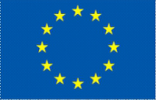Annona reticulata
To simplify the nutrient content information, scores have been calculated for all foods: “for whether they are a high source (+++), source (++), present, but low source (~), or not a source, for the respective nutrient. To do so, mean values of recommended nutrient intake data (RNI) of men and women, were calculated based on FAO/WHO references (FAO/WHO, 2004). Thereafter, the percentage of RNI of iron, folate, vitamin C and vitamin A provided by 100 g of the respective food was calculated. The thresholds for whether the respective food is a high source, source, present, but low source, or not a source of the selected nutrient, are based on FAO/WHO food labelling standards and own adaptions (FAO, WHO, 2007).
| Food code | Food name | Scientific Name | Iron | Vitamin A | Folate | Vitamin C |
|---|---|---|---|---|---|---|
| F0053 | Custard apple, raw | Annona reticulata | ~ | 1 | 2 | ++ |
Explanation of SCORES
Minerals and vitamins (except vitamin C)
| +++ | ++ | ~ | 1 | 2 |
| high source | source | present, but low source | not a sources | no data available |
| ≥ 30 % of RNI | 15-29% of RNI | 5-14% of RNI | < 5 % | ND (no data available) |
| FAO/WHO (2007) | FAO/WHO (2007) | own adaptation | own adaptation | own adaptation |
The thresholds for "high source" and "source" are based on FAO/WHO (2007): Codex Alimentarius Commission, Food Labelling. Fifth edition. Rome. Recommended nutrient intakes (RNI) used in the calculation of the scores are based on FAO, WHO (2004): Vitamin and mineral requirements in human nutrition: report of a joint FAO/WHO expert consultation. Second edition. WHO, FAO.
Vitamin C
| +++ | ++ | ~ | 1 | 2 |
| high source | source | present, but low source | not a sources | no data available |
| ≥ 100 % of RNI | 40-99% of RNI | 10-39% of RNI | < 10% | ND (no data available) |
| own adaptation | own adaptation | own adaptation | own adaptation | own adaptation |


